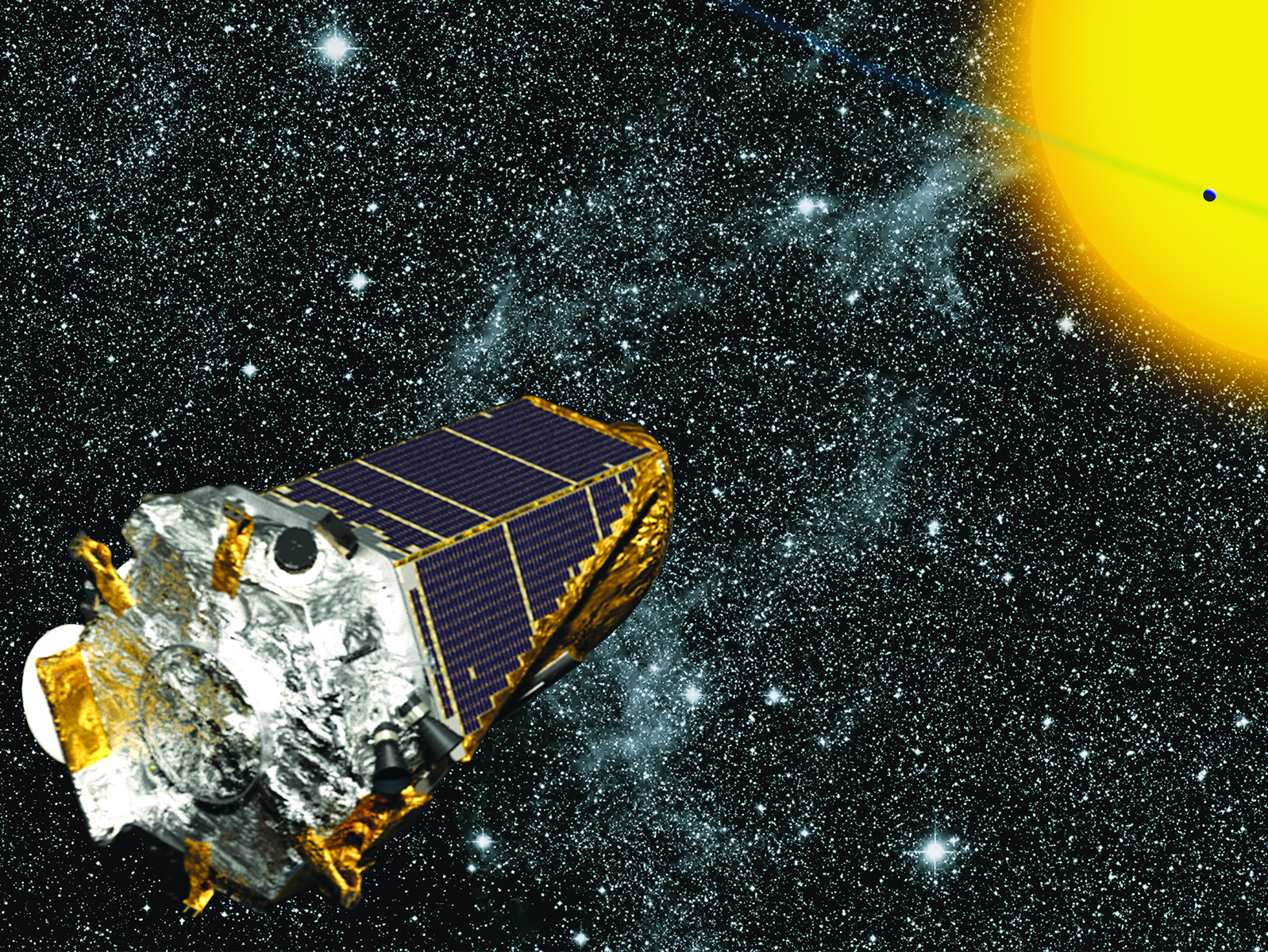
NATIONAL HARBOR, Md. — The project scientist for NASA’s Kepler Space Telescope offered more details here about a plan to resurrect the crippled spacecraft for an extended mission that could last through 2016.
Known as K2, the proposed mission would use the hobbled space telescope, which launched in 2009 and lost most of its fine-pointing ability earlier this year when the second of its four reaction wheels broke down, to continue scanning for Earth-like planets orbiting the habitable zone of faraway stars. The K2 mission would be entirely operated by guest observers, who would compete for observing time on the roughly 1-meter diameter telescope.
Under the yet-to-be-approved plan, Kepler would shift its focus from a narrow swath of sky to five or six fields of view aligned roughly with Earth’s orbit, or ecliptic plane. In the K2 configuration, Kepler would scan one field of view for 80 days before beaming data back to Earth. The craft would depend on its thrusters and pressure from photons emanating from the sun to maneuver in space.
However, the K2 plan will only work “if we get through the senior review process and the panel agrees to fund us,” Steven Howell, Kepler project scientist at NASA’s Ames Research Center in Mountain View, Calif., said here Jan. 6 at a town hall forum held during the American Astronomical Society’s winter meeting.
The K2 mission will compete with eight other NASA astrophysics projects for extended mission funding in a senior review set to begin Feb. 1 and conclude May 1. NASA gave K2 the green light to jump into the extended-mission fray back in December.
The missions Kepler will compete with for extended funding are: Fermi, a star-gazing gamma-ray observatory formerly known as the Gamma-ray Large Area Space Telescope; MaxWISE, the repurposed Wide Field Infrared Survey telescope now in the middle of a search for near-Earth objects; NuSTAR, an X-ray observatory that searches for cosmic-ray bursts and black holes; Planck, a European universe-mapping microwave observatory that NASA supports; Spitzer, an infrared observatory now studying aging galaxies where stars have ceased to form; Suzaku, the Japanese X-Ray space telescope formerly known as Astro-E2, for which NASA manages a U.S. guest observer program; Swift, an ultraviolet observatory that studies gamma-ray bursts; and XMM-Newton, a European X-ray telescope whose instruments were partially paid for by NASA.
Of these eight missions, only NuStar, which launched in 2012, is competing for extended funding for the first time.
Whichever missions are approved for extensions will see the funding taps turned on in 2015. The money could keep flowing through 2018, at the latest. How long an extension each mission gets depends on what mission managers are seeking, and what NASA’s senior review panel recommends.
On an annual basis, the cost of the extended Kepler mission would be “very competitive,” Howell said at the town hall.
That means about equal to the roughly $20 million a year it cost to fly the old mission, according to John Troeltzsch, program manager for civil space systems at Kepler prime contractor Ball Aerospace & Technologies Corp., Boulder, Colo.
“We’re not asking for a bump up,” Troeltzsch said in an interview after the K2 town hall. “So in some ways, you’re getting a new mission, including the development, for the amount of money you were using to fly the old mission.”
Currently, Ball has the equivalent of about five full-time employees working on Kepler at its Boulder headquarters. They supplement about six employees at the Laboratory for Atmospheric and Space Physics at the University of Colorado, Boulder, the telescope’s main operations hub.
Kepler searches for potentially habitable planets orbiting faraway stars by searching for the telltale flicker of light the planet creates when it passes in front of its host star. The mission, the tenth in NASA’s Discovery program of scientist-led missions, cost about $600 million to build, launch and operate for its three-and-a-half-year primary mission.
In April 2012, Kepler’s primary mission was approved for an extension that was supposed to stretch into 2016. Instead, the mission ground to a halt in May 2013, when the telescope’s second reaction wheel malfunctioned. It was only thanks to the extended mission funding the project had already secured that engineers and scientists at Ames, Ball and the University of Colorado were able to put the K2 proposal together at all.
Related
ncG1vNJzZmiroJawprrEsKpnm5%2BifHSEmG9spJ2gobKzedKcoJ6mpJ7AtXnPrqqhnaNisrnAxKebnpxdora0v8iopWaen6d6pL7IqaelnZRiwLGtwp5krZ2cmsCku8%2BeZJqglZaxcA%3D%3D